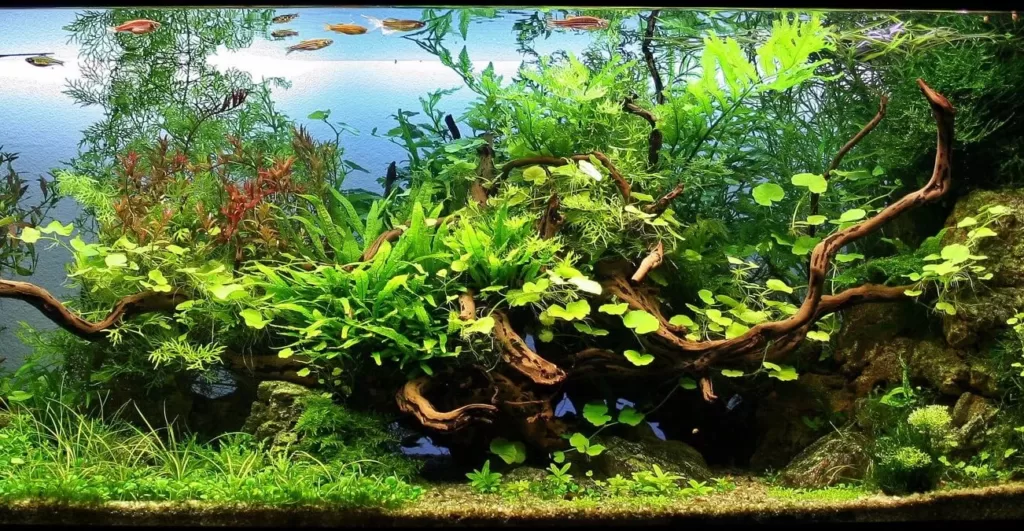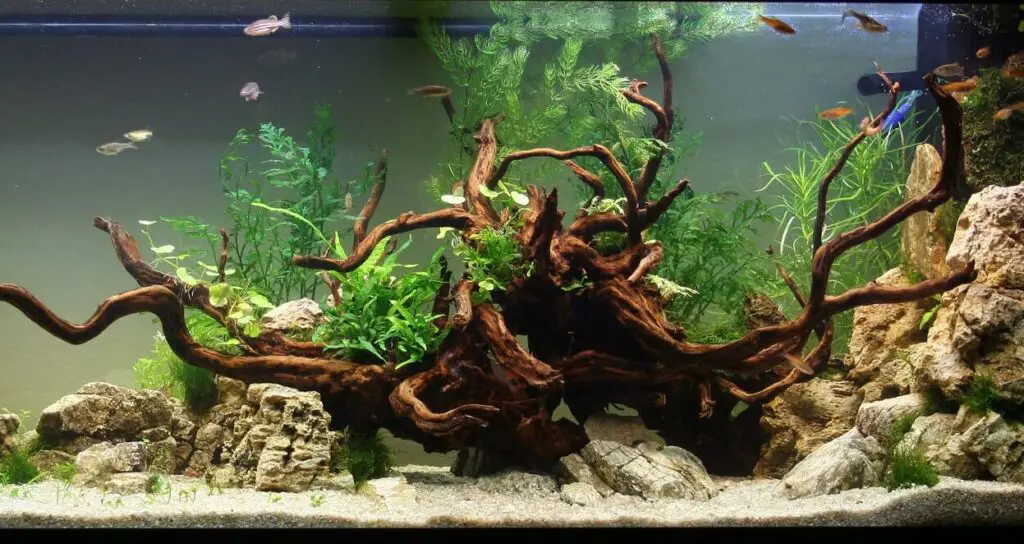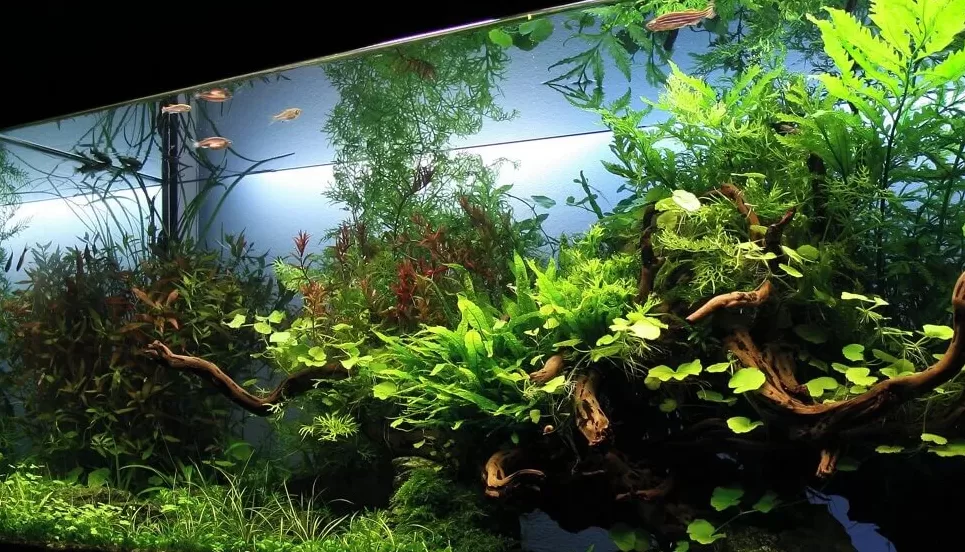Mesquite Driftwood: Should You Purchase for Aquascape Project
Mesquite driftwood is a favorite among many aquascaping artists due to its stunning branchy structure.
However, it is a pretty tricky wood to use.
The artists need to know the best way to use it to not harm the ecosystem in their aquarium, especially in a DIY project.
Mesquite Driftwood is Known to Be Toxic
This driftwood is tricky to use that it is known to have a particular concentration of toxin.
This wood species is an oily tree. It is common knowledge among aquascapers that such a tree will release toxins when added to an aquarium ecosystem.
Initially, people will not recognize how driftwood can be dangerous. However, over time, they can see that their fish or amphibians become sick or even die.
Fish tends to be more tolerant of toxins, but a high concentration would still be harmful.
Whether some people did not recommend using it in your fish tank, but a professional and experienced in aquascaping will still use it with caution. They know what they are doing.
For a beginner, you might avoid using it, but if you still want to use it and that’s the only option, first, learn how to clean your Mesquite Driftwood properly.
Should You Buy It or Make a DIY Project?
For an obvious reason, it is safer to purchase Mesquite driftwood from a reputable supplier.
Mesquite wood seems to release less more tannins than Malaysian driftwood. In my perspective, tannins and other things that are “as” natural as an aquarist can make for their aquascaping project.
Some aquarists don’t like it because it resembles a dirty tank, but if the fish are happily doing their thing, why not offer it even if it is just a comfortable thing for them.
If you buy mesquite wood from a good supplier, the type of Mesquite chosen would be less toxic and more suitable for aquascaping.
However, it is understandable that some people would like to do a DIY project.
They might be living in a place where the wood is readily available to them.
For a true artist, making your driftwood also enables your creativity to flourish, and you will get the shape you wish for.
Treating The driftwood Before Use
If you have decided to aquascaping the Mesquite driftwood, you need to make sure it is less toxic. These are the ways to treat it before Use:
- Cleansing
In the beginning, the branch should be cleansed from any debris or other things that may attach to the structure.
You should avoid using chemicals for this process.
It is also essential to brush the surface for maximum results.
- Curing
In the curing process, the wood is soaked using dechlorinated water.
The recommended curing time is 7 to 14 days.
It is to ensure that the wood releases its tannins and other harmful substances.
This process also enables the wood to be waterlogged.
- Boiling
This process is optional but highly recommended since it shortened the curing process.
Boiling the wood for 1 to 2 hours will sterilize the wood so that parasites will not be added to the aquarium water when the driftwood is added to it later.
How to handle mesquite driftwood properly?
Tannins might be a big problem for you if you can’t find truly dry wood for your driftwood, and you might be confused when you search for any information out there about any toxic or unsafe wood for driftwood.
Please remember you need to try and test it before; you never know if mesquite wood or any driftwood that you found can be harmful to your fish or not.
Nobody knows whether mesquite wood is toxic or not, and nobody knows if mesquite wood is truly endangered your fish or ecosystem in your aquarium.
Don’t trust us or any source out there; try and prove it; you’re not going to make something if you trust someone else.
Before you just put your mesquite wood into your aquarium, there are few things that you need to consider:
- Clean it properly
- Curing the wood is a must thing to do
- Make sure the mesquite wood is already aged
- Wetting and drying several times
- Don’t forget to boil it
It is the same and ordinary things and steps to do before you sink your driftwood, but in our experience, you better do it at least double the time.
Whatever toxins in your mesquite wood would break down, you might read our article on cleaning the driftwood properly.
In Summary
To sum up, this passage here is some information about Mesquite driftwood that you need to know:
- The wood can be toxic to fish and amphibians.
- It is safer to purchase the wood from a reputable supplier, but a DIY project is possible.
- To treat the wood, you should cleanse, cure, and optionally boil it.
It is still possible to make the driftwood on your own despite its toxic nature. However, you need to treat it right beforehand and educate yourself about its types.
Aquascape Project Design Ideas: Tree of Life

Aquascape Details: Dimensions 121 × 41 × 45 cm
Tank Volume: 225L
Background: Back lightning
Lighting: 2x54w T5 High light 4 hours/day
Filtration: Inner integrated Juwel Bioflow

Plants In Tank:
Pogostemon (Octopus and Helfery) / Ludwigia repens x arcuate / Microsorum pteropus / Ceratopteris silliquosa / Hemianthus micranthemoides / Echinodorus tenellus / Bolbitis heudelotii / Marsilea hirsute / Monosolenium tenerum / Java Mosses, Spiky, Christmas and Flame / Vallisneria nana / Sagittaria subulate / Hydrocotyle (dissecta and leucocephalla) / Rotala sp. / Elatine hydropiper / Staurogyne sp / Pistia stratiotes / Riccia fluitans / Eleocharis (acicularis, parvula and vivipara) / Cardamine lyrate / Animals Neocaridina denticulate / Caridina multidentata/japonica / Neritine sp / Danio Tinwini / Danio Choprai / Danio margaritatus / Danio Rerio / Danio rerio var frankei / Danio rerio var frankei semi albino / Otocinclus affinis / Ancistrus sp

Materials: Redmoor Driftwood, rocks of Tassos island
Additional Note:
On the left, the river’s mainstream is shown with small grassy plants and higher plants starting to define the left waterside of the river.
